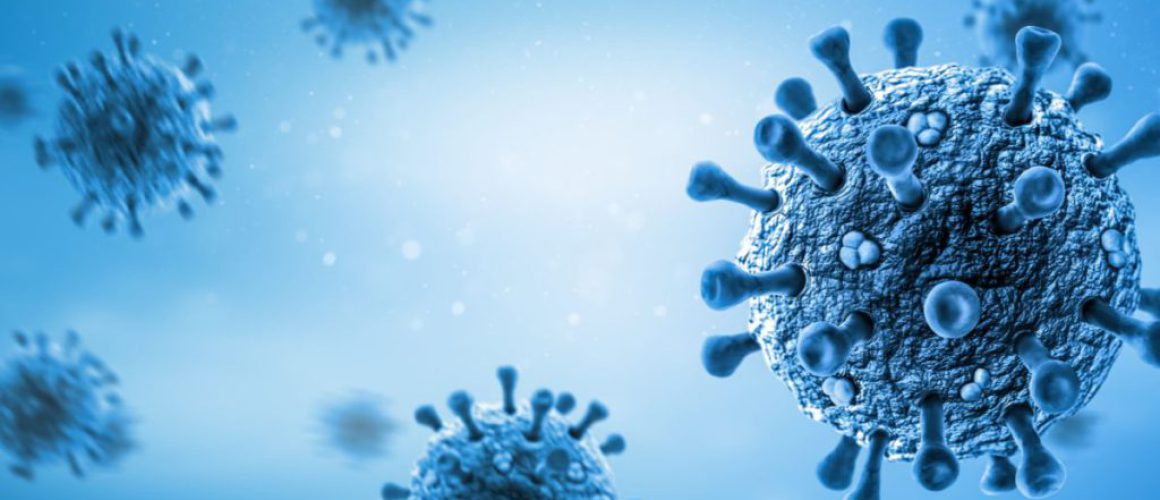Why are viruses not considered living organisms?
Table of Contents
Life doesn’t come with a one-size-fits-all definition. We often use certain characteristics as criteria to determine whether something is considered alive and a living organism. These characteristics include cellular organization, homeostasis, reproduction, and the ability to acquire and process energy. Let’s take a closer look at these defining traits and see how viruses fit into the puzzle of life.
Viruses are not considered living organisms because they do not grow or reproduce by themselves.
The Complex World of Cells
Cells serve as the fundamental units of life. According to the cell theory, they possess certain properties that define their existence. Complexity and organization, containing genetic material and the machinery for gene expression, reproductive ability, energy acquisition and processing, metabolism, mechanical activities, response to stimuli, regulation of internal environment, and the potential for evolution—all these properties encompass the essence of a cell.
Viruses: Meeting Some Criteria
Viruses, those intriguing microscopic entities, do exhibit some of the criteria mentioned above. They possess genetic material, either in the form of RNA or DNA. In the case of RNA viruses, they even carry the machinery to convert RNA into DNA, a clever trick called reverse transcriptase. If viruses contain genetic material and can express it by hijacking a host cell, then it follows that they can undergo evolution. Evolution, simply put, refers to the change in allele frequencies within a population. With genes and alleles in their repertoire, viruses have the potential for genetic variation, leading to evolutionary changes over time.
The Reproduction Dilemma
Reproduction is another aspect that supports the argument for the vitality of viruses. They have the ability to reproduce and multiply, although they rely on the machinery of host cells to do so. Within the confines of a host, viruses skillfully exploit cellular mechanisms to replicate their genetic material and assemble new viral progeny. This act of replication mirrors the essence of reproduction seen in other living organisms.
The Complexities (and Limitations) of Viral Structures
While some viruses exhibit complex structures composed of proteins, lipids, and carbohydrates, they still fall short of the complexity found in even the simplest unicellular organisms. These organisms possess various components that contribute to the regulation of internal environments and perform a range of other functions. Viruses, on the other hand, lack the ability to regulate their internal environments (homeostasis) or respond to stimuli like their living counterparts, despite having receptors or antigens on their envelopes.
Metabolism: The Missing Piece
One crucial criterion that separates living organisms from viruses is metabolism. Viruses lack their own metabolism. Unlike bacteria that consume sugars, synthesize proteins, or produce ATP, viruses heavily rely on the cellular machinery of their host for these essential processes. Without independent metabolic capabilities, viruses cannot fully satisfy the requirements for life.
The Movements of Life
Flagella, cilia, and motor proteins—these are the movers and shakers of the living world. Unfortunately for viruses, they lack such mechanisms. Unable to engage in mechanical activities or move independently, viruses are akin to passive particles drifting in search of suitable host cells. The absence of these characteristic features further highlights the distinction between viruses and living organisms.
The Verdict: Viruses and the Spectrum of Life
In light of the criteria discussed, it becomes evident that viruses do not fulfill all the requirements for being classified as living organisms. While they possess genetic material, reproduce, and exhibit some level of complexity, they fall short in essential aspects such as homeostasis, response to stimuli, metabolism, and mechanical activities. Despite meeting some criteria, viruses cannot be considered truly alive.
The enigma of viruses and their status as non-living entities raises fascinating questions about the boundaries and definitions of life itself. By studying viruses, we gain valuable insights into the intricate world of biology, enhance our understanding of infectious diseases, and develop strategies to combat viral threats effectively.
Remember, the world of science is full of mysteries, and viruses continue to challenge our understanding of the living and the non-living. As we unveil more secrets about these microscopic agents, we inch closer to comprehending the delicate balance between life and its elusive counterparts.
Frequently Asked Questions
Why are viruses not considered living organisms?
Viruses differ from living organisms in several ways. They lack the ability to reproduce on their own, requiring a host cell to replicate. They also do not have their own metabolism, cannot maintain homeostasis, and do not respond to stimuli like living organisms do.
Why can’t viruses be considered alive despite having genetic material?
While viruses do contain genetic material (either DNA or RNA), they lack the machinery to express these genes independently. They must hijack a host cell’s machinery to replicate. This dependency on a host cell is one of the reasons why viruses are not considered living organisms.
Do viruses evolve like other living organisms?
Yes, viruses do evolve, but their evolution is different from that of living organisms. Viruses evolve through changes in their genetic material, which can occur when they replicate inside a host cell. However, this process is dependent on a host and does not occur independently, as it does in living organisms.
Why is it important to understand that viruses are not living organisms?
Understanding that viruses are not living organisms helps us understand their behavior and how to combat them. For example, because viruses cannot survive without a host, strategies to prevent infection often focus on blocking the virus from entering potential host cells.
Can a virus carry out any life processes on its own?
A virus cannot carry out life processes on its own. It does not have its own metabolism, cannot move, and cannot reproduce without a host cell. This lack of independence is a key reason why viruses are not considered living organisms.
Sources
- “Living Organisms Author Their Read-Write Genomes in Evolution” by J. Shapiro. This paper discusses the evolution of living organisms and the properties that define their existence. It also touches on the complexity and organization of cells, which is one of the criteria that viruses do not fully meet.
- “The human genetic determinism of life-threatening infectious diseases: genetic heterogeneity and physiological homogeneity?” by J. Casanova and L. Abel. This paper discusses the genetic aspects of infectious diseases, which is relevant to the discussion of viruses as they contain genetic material.
- “Viruses and Evolution – Viruses First? A Personal Perspective” by K. Moelling and F. Broecker. This paper discusses the role of viruses in evolution and their potential as early forms of life. It also discusses the limitations of viruses, such as their lack of metabolism and mechanical activities.
- “Impact of physical exercises on immune function, bone mineral density, and quality of life in people living with HIV/AIDS: a systematic review with meta-analysis” by S. Ibeneme et al. While this paper focuses on HIV/AIDS, it is relevant as HIV is a type of virus. The paper discusses the impact of the virus on the immune system, which is one of the aspects that differentiates viruses from living organisms.
Disclaimer: The views and opinions expressed in this article are solely those of the author, and do not constitute professional medical advice or guidance. The content provided is for informational purposes only and should not be interpreted as a substitute for professional medical or scientific advice, diagnosis, or treatment. Always consult with a qualified healthcare professional or relevant expert for specific questions related to your health or any other subject matter. The author and the platform do not assume any responsibility for any reliance on the information provided in this article.
Sean Schepers is a third-year Medical Technology student at Mahidol University with a passion for all things health and medicine. His journey into the world of medicine has led him to explore various fields. Sean's blog posts offer a unique perspective, combining his academic insights with personal experiences. When he's not studying or blogging, Sean enjoys keeping up with politics and planning his future career in medicine.
In addition to his studies, Sean serves as the chairman of the Rights, Liberties, and Welfare Committee, a role that reflects his commitment to advocacy and social justice. Beyond his academic pursuits, Sean offers tutoring services in English and Biology, further demonstrating his dedication to education and mentorship. His journey is one of continuous discovery, and he invites others to join him as he explores the dynamic and transformative world of medical technology.


